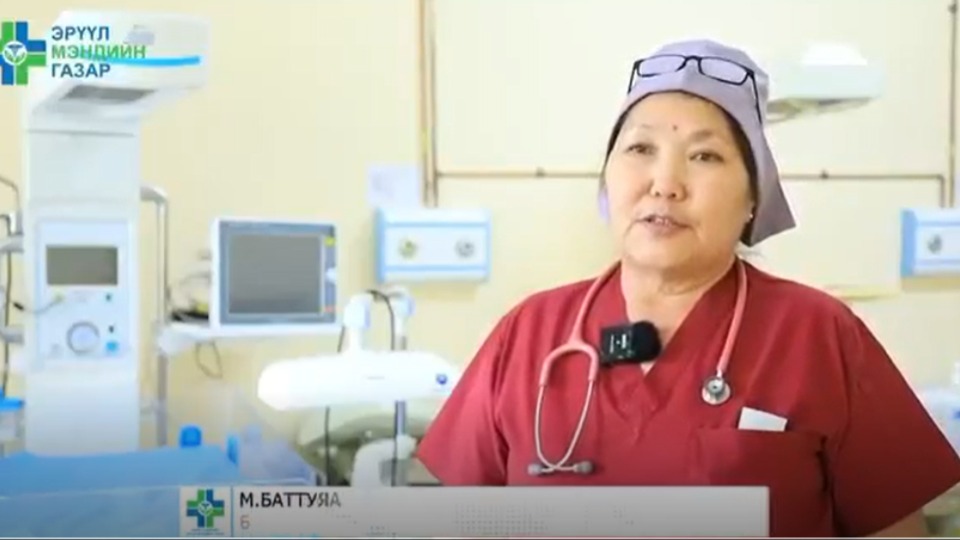In 2021, at the height of the COVID-19 pandemic, Deseret International Charities (DIC) was still seeking ways to support the people of Mongolia. During a meeting with the Ministry of Health, Deputy Battuvshen, a pediatrician, raised urgent concerns: newborn jaundice rates were alarmingly high, and hospitals lacked sufficient equipment to diagnose and treat the condition.
When DIC looked further into the issue, the numbers were staggering. About 80% of Mongolian newborns show some level of jaundice; 20% of those cases are serious enough to require hospitalization, and 1% result in death. Left untreated, jaundice can cause brain damage or lifelong disabilities. In fact, up to 70% of childhood disabilities in Mongolia can be traced back to untreated jaundice.
“In Mongolia, we neglect our children without knowing we’re neglecting them,” said Pujee, Director of Deseret International Charities.
At the time, parents often had to travel more than an hour just to have their babies checked, and many children went undiagnosed until it was too late.
Recognizing the urgent need, DIC launched a nationwide project to make jaundice diagnostic and treatment equipment accessible to hospitals across the country. The first donations were delivered in 2022, beginning with hospitals that had the highest birth rates. Each donated set includes a bilimeter, bililight, infant scale, fetal doppler, and otoscope. By the project’s completion in 2026, 320 sets will have been distributed to nearly 240 hospitals.
- Jaundice-MNG5.jpg
- Jaundice-MNG2.jpg
- Jaundice-MNG1.jpg
- Jaundice-MNG3.jpg
- Jaundice-MNG4.jpg
- Jaundice-MNG7.jpg
- Jaundice-MNG8.jpg
- Jaundice-MNG9.jpg
- Jaundice-MNG11.jpeg
| Temple Square is always beautiful in the springtime. Gardeners work to prepare the ground for General Conference. © 2012 Intellectual Reserve, Inc. All rights reserved. | 1 / 2 |
The impact is already profound. Where families once had to travel long distances, many can now access testing within five minutes of their homes. In some regions, equipment can even be sent home with parents so nurses can help monitor babies directly. One mother who lives in the 10th khoroo of the Songinokhairkhan district of Ulaanbaatar City said, “I am very happy that our family clinic now has equipment for treating newborn jaundice. I am grateful that my baby’s jaundice was treated quickly and efficiently. Now, I don’t have to waste time going all the way to a big hospital just to reduce my baby’s jaundice, which is wonderful.” Medical professionals are also pleased with the new equipment provided to them. Khovd aimag Buyant soum Dr B. Uugantsetseg expressed gratitude, “This equipment was so needed in our community and we are so grateful for it. Now patients don’t have to go to the capital city for treatment which saves time and money. We have already treated 8 infants with the light therapy and have found it very effective with immediate results.”
As with any large-scale effort, there have been challenges. Ensuring proper training for hospital staff was a top priority, and the Ministry of Health has taken the lead in providing instruction. Equipment upkeep was another concern, but DIC ensured hospitals had access to trained technicians and direct connections with vendors. Each device comes with a one-year guarantee and is expected to last for 10,000 hours of use.
Reflecting on the project’s progress, Director Pujee said, “We didn’t want people to have to travel far away to get checked, especially in the harsh Mongolian winters. That was our goal, and we have accomplished it. The mothers are very happy. I love knowing we are helping new lives and making a difference for them. It’s incredible to feel the joy of the beneficiaries. I wish everyone could see the joy these donations bring.”
Deseret International Charities focuses on five key areas: health and disabilities, education, vision, clean water, and emergency response. As the jaundice project nears completion, Director Pujee says the organization will continue seeking new opportunities to strengthen the health and welfare of Mongolia’s children.
Click here to see a video about the donations.
